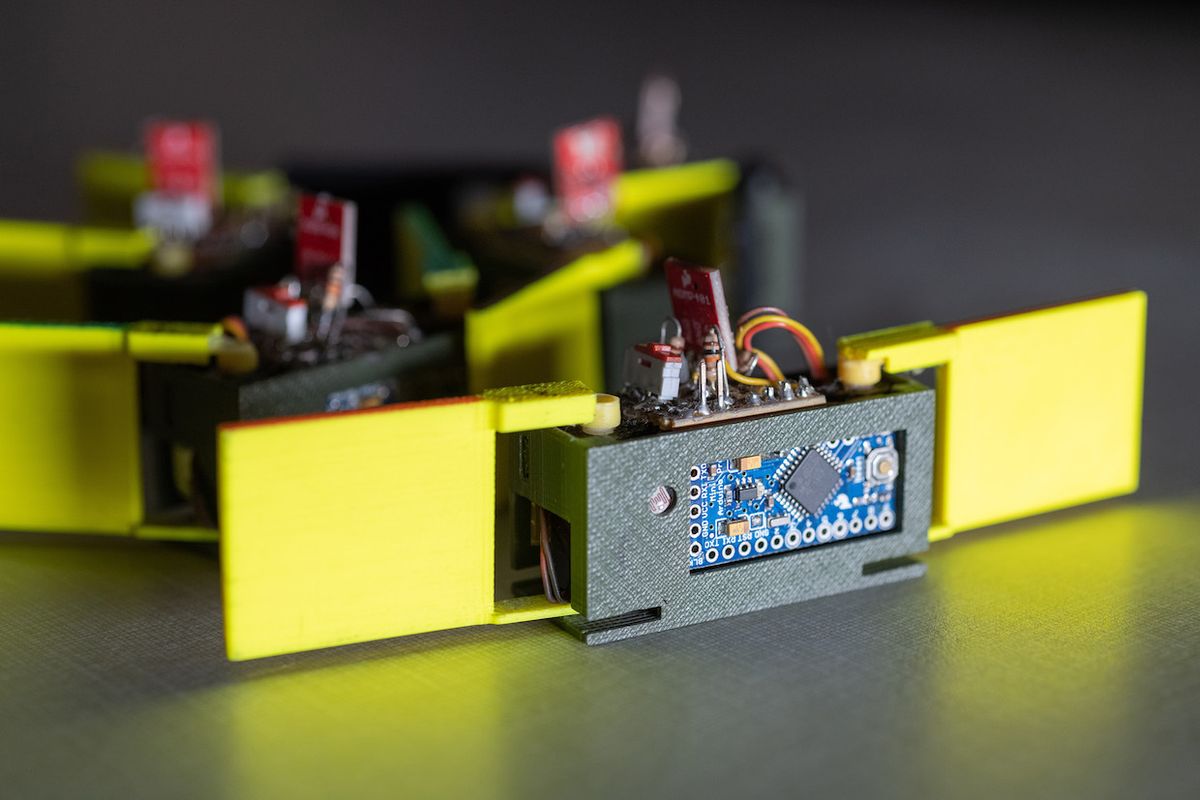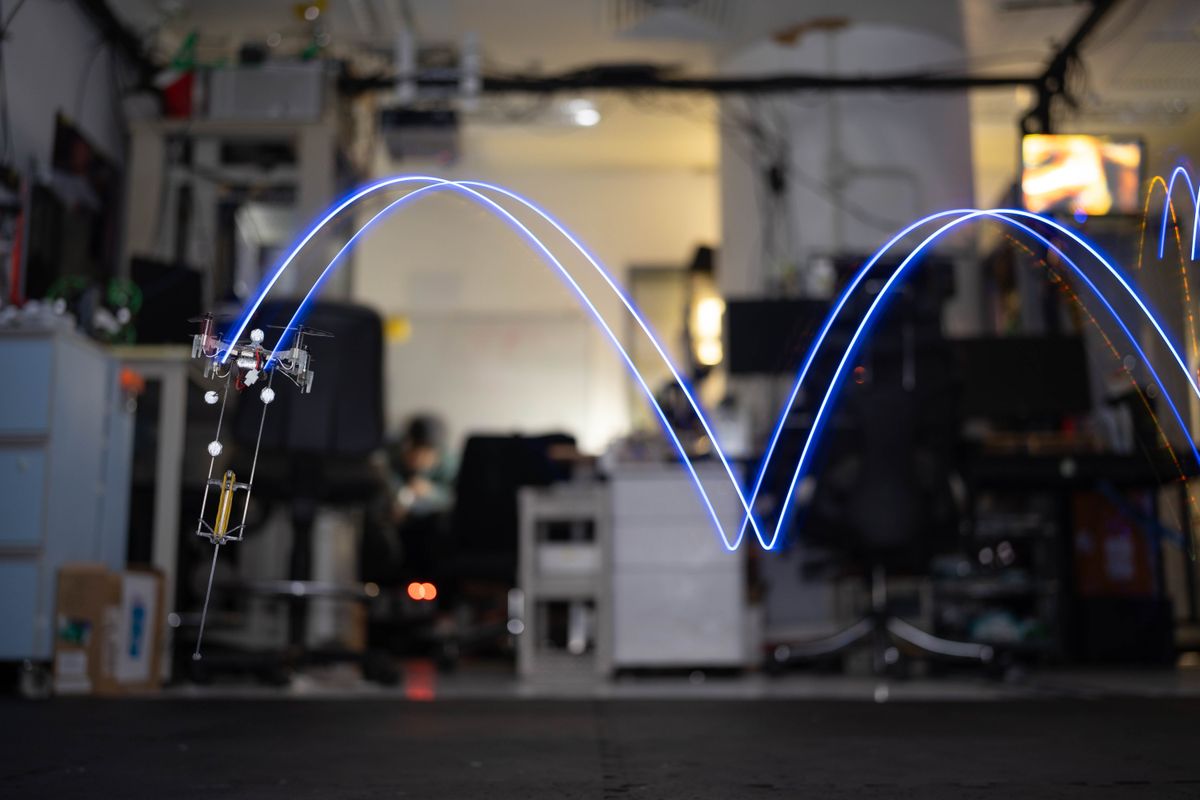The idea behind swarm robots is to replace discrete, expensive, breakable uni-tasking components with a whole bunch of much simpler, cheaper, and replaceable robots that can work together to do the same sorts of tasks. Unfortunately, all of those swarm robots end up needing their own computing and communications and stuff if you want to get them to do what you want them to do.
A different approach to swarm robotics is to use a swarm of much cheaper robots that are far less intelligent. In fact, they may not have to be intelligent at all, if you can rely on their physical characteristics to drive them instead. These swarms are “stochastic,” meaning that their motions are randomly determined, but if you’re clever and careful, you can still get them to do specific things.
Georgia Tech has developed some little swarm robots called “smarticles” that can’t really do much at all on their own, but once you put them together into a jumble, their randomness can actually accomplish something.
Honestly, calling these particle robots “smart” might be giving them a bit too much credit, because they’re actually kind of dumb and strictly speaking not capable of all that much on their own. A single smarticle weighs 35 grams, and consists of some little 3D-printed flappy bits attached to servos, plus an Arduino Pro Mini, a battery, and a light or sound sensor. When its little flappy bits are activated, each smarticle can move slightly, but a single one mostly just moves around in a square and then will gradually drift in a mostly random direction over time.
It gets more interesting when you throw a whole bunch of smarticles into a constrained area. A small collection of five or 10 smarticles constrained together form a “supersmarticle,” but besides being in close proximity to one another, the smarticles within the supersmarticle aren’t communicating or anything like that. As far as each smarticle is concerned, they’re independent, but weirdly, a bumble of them can work together without working together.
“These are very rudimentary robots whose behavior is dominated by mechanics and the laws of physics,” said Dan Goldman, a Dunn Family Professor in the School of Physics at the Georgia Institute of Technology.
The researchers noticed that if one small robot stopped moving, perhaps because its battery died, the group of smarticles would begin moving in the direction of that stalled robot. Graduate student Ross Warkentin learned he could control the movement by adding photo sensors to the robots that halt the arm flapping when a strong beam of light hits one of them.
“If you angle the flashlight just right, you can highlight the robot you want to be inactive, and that causes the ring to lurch toward or away from it, even though no robots are programmed to move toward the light,” Goldman said. “That allowed steering of the ensemble in a very rudimentary, stochastic way.”
It turns out that it’s possible to model this behavior, and control a supersmarticle with enough fidelity to steer it through a maze. And while these particular smarticles aren’t all that small, strictly speaking, the idea is to develop techniques that will work when robots are scaled way way down to the point where you can't physically fit useful computing in there at all.
The researchers are also working on some other concepts, like these:

Er, yeah. I’m…not sure I really want there to be a bipedal humanoid robot built out of a bunch of tiny robots. Like, that seems creepy somehow, you know? I’m totally okay with slugs, but let’s not get crazy.
“A robot made of robots: Emergent transport and control of a smarticle ensemble, by William Savoie, Thomas A. Berrueta, Zachary Jackson, Ana Pervan, Ross Warkentin, Shengkai Li, Todd D. Murphey, Kurt Wiesenfeld, and Daniel I. Goldman” from the Georgia Institute of Technology, appears in the current issue of Science Robotics.
Evan Ackerman is a senior editor at IEEE Spectrum. Since 2007, he has written over 6,000 articles on robotics and technology. He has a degree in Martian geology and is excellent at playing bagpipes.



